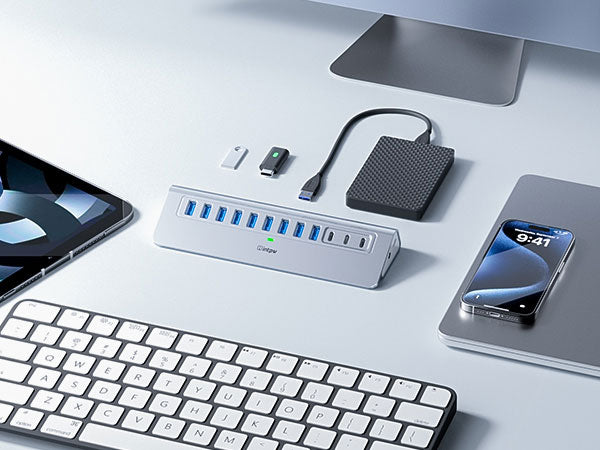
Why Wireless Mice and Keyboards Disconnect When Using USB 3.0?
, by BenceEthan, 5 min reading time

, by BenceEthan, 5 min reading time
Wireless mice and keyboards have become essential tools for many people. They offer freedom from tangled wires and are easy to set up and use. However, if you’ve experienced frequent disconnections while using these devices with a USB 3.0 port, you’re not alone. Many users face this issue, and it can be frustrating, especially during work or gaming sessions.
In this blog, we’ll explain why this happens, the science behind the problem, and practical steps you can take to fix it.
USB 3.0 is a high-speed connection standard that offers faster data transfer rates compared to USB 2.0. It can transfer data at speeds up to 5 Gbps, which is ten times faster than USB 2.0's 480 Mbps. USB 3.0 is widely used for devices like external hard drives, flash drives, and other peripherals.
Wireless mice and keyboards typically use a USB dongle to connect to your computer. These dongles rely on radio frequencies, usually in the 2.4 GHz range, to communicate with the devices. This frequency is also commonly used by Wi-Fi and Bluetooth devices.
The main issue lies in interference. USB 3.0 ports and devices can emit electromagnetic noise that disrupts the 2.4 GHz frequency band used by wireless mice and keyboards. This interference can cause disconnections, lag, or unresponsiveness in your wireless devices.
Here’s how the interference happens:
If USB 3.0 interference is affecting your wireless devices, you may notice the following symptoms:
Fortunately, you don’t have to live with constant disconnections. Here are some practical solutions to reduce or eliminate interference between USB 3.0 and your wireless devices:
One of the easiest solutions is to use a USB extender or hub. Plug the USB dongle for your wireless device into an extender and place it farther away from the USB 3.0 port. This increases the distance between the dongle and the source of interference.
USB 2.0 ports do not produce the same level of electromagnetic noise as USB 3.0 ports. Try plugging your wireless dongle into a USB 2.0 port instead. Most computers have a mix of USB 2.0 and USB 3.0 ports, so this is an easy fix.
Keep your wireless dongle and devices as far away as possible from USB 3.0 ports, cables, or devices. Moving the dongle to the front of your computer or to a side port can help reduce interference.
If you have multiple USB 3.0 devices connected to your computer, their cables might be contributing to the noise. Organize your cables and avoid tangling or overlapping them. Use cable ties or clips to keep them neat.
Older wireless devices may be more susceptible to interference. Upgrading to newer models with better shielding or higher-quality dongles can reduce the problem.
If interference persists, consider switching to a Bluetooth mouse and keyboard. Bluetooth operates on the same 2.4 GHz frequency but is often better equipped to handle interference.
Ensure that your wireless devices have the latest drivers and firmware. Manufacturers often release updates to improve performance and address compatibility issues.
Other devices, such as Wi-Fi routers or microwaves, may also use the 2.4 GHz frequency and contribute to interference. Try moving these devices away from your workspace or changing the channel on your router to minimize overlapping frequencies.
To avoid similar problems in the future, keep these tips in mind:
If you’re still experiencing disconnections, use this checklist to identify and solve the problem:
While dealing with USB 3.0 interference can be annoying, fixing it will greatly improve your experience. A stable connection for your wireless mouse and keyboard ensures smoother workflows, better gaming sessions, and less frustration overall.
Disconnections between wireless mice and keyboards and USB 3.0 ports are a common but solvable issue. By understanding the root cause—electromagnetic interference—you can take steps to eliminate it. Whether you use a USB extender, switch ports, or upgrade your hardware, these simple solutions can make your wireless devices perform reliably again.
With the right setup, you’ll enjoy a seamless experience without worrying about interruptions. Happy working!

Subscribe to our emails